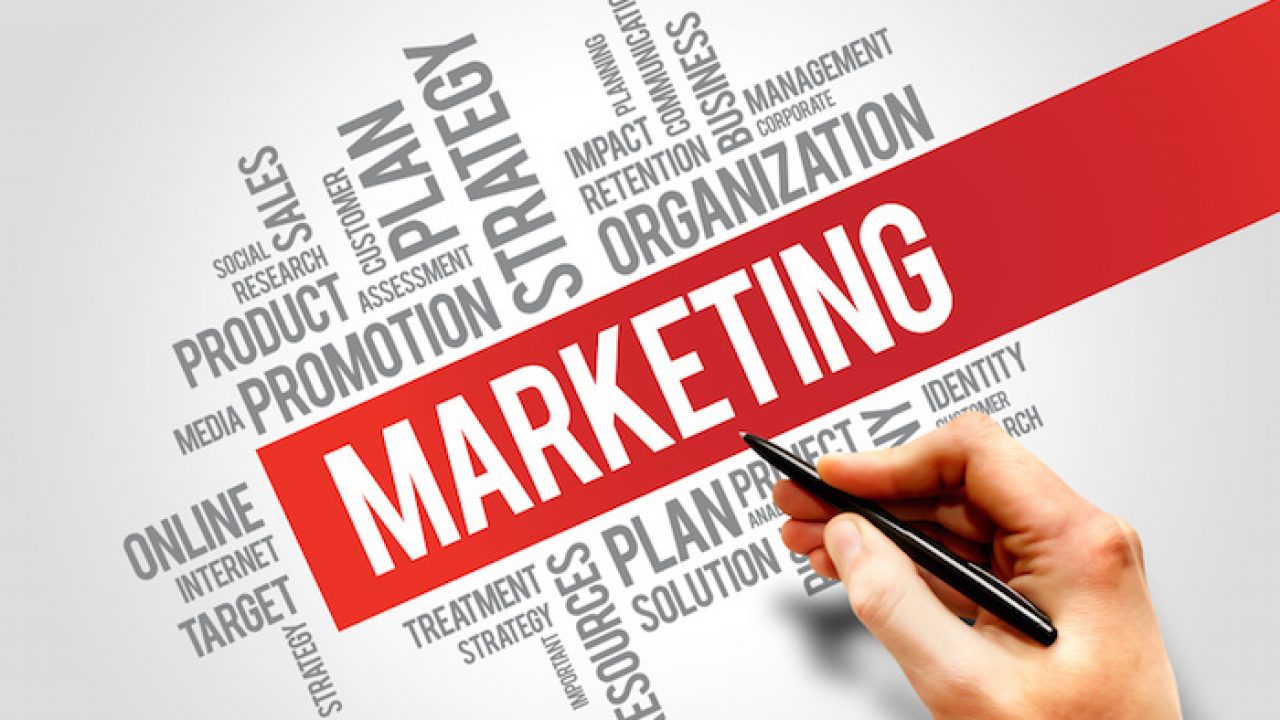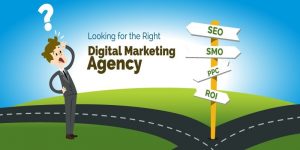1. A/B Testing
Testing two versions of a webpage, email subject line, landing page, CTA, etc. to see which one performs better.
2. Advertising
Putting a spotlight on a product, service or business through paid broadcasting – print or digital.
3. Analytics
Tracking data and creating meaningful patterns from it that inform future marketing endeavors. The data can come from website traffic, conversions, social media, etc.
4. Annual Recurring Revenue
Repeating income for one calendar year. It’s often subscription-based revenue. You may see it referred to as ARR.
5. Artificial Intelligence
A computer, machine, or software system or process that can mimic certain aspects of human intellect.
AI programs may be able to display image perception, reasoning and voice recognition.
6. Baseline
The starting point from which comparisons are made for analysis, performance improvement, forecasting and strategy creation.
7. Blogging
Originally, the term was web log or weblog and eventually…blog. Individuals, small business and even large corporations write articles, commentaries, and the like, publishing regularly on their website. A primary component of the inbound marketing method, blogging helps to drive website traffic, builds thought leadership and authority, and drives leads.
8. Bottom of the Funnel
A stage in the buying process, this happens last – when leads move through the top of the funnel (identifying a problem), the middle (shopping for solutions), and finally, to the bottom, where they’re ready to buy. At this stage, leads are interested in a demo, a call, or a free consultation.
9. Bounce Rate
The number of people who land on a page of your website and leave without clicking on anything before moving on to another page on your site.
10. Buyer Persona
A summary of your ideal buyer, based on market research, data and hypothesis. The representation helps marketers define their ideal audience and it helps salespeople determine lead quality.
11. Brand
Anything that brings about awareness of a specific product, service or business while separating it from other establishments.
12. Business-to-Business (B2B)
Describing a business that markets – or sells – to other businesses.
13. Business-to-Consumer (B2C)
Describing a business that markets and sells to consumers (think Apple).
14. Churn
The percentage of customers who cancel a product or service or leave within a specified time period.
15. ClickThrough Rate (CTR)
This number shows the people that move through your website or marketing campaigns. It’s actually the “clicks” or actions prospects take, divided by the total number of actions people could take. Hence, the name “clickthrough rate.”
16. Cold Calling
Approaching prospective clients by phone or face-to-face without having ever had any interaction with them before.
17. Cold email
Using email to interact with a prospect with whom they’ve had no prior contact.
18. Comparative Advertising
The type of advertising in which a company makes a direct comparison to another brand, firm or organization.
19. Content
Information created to inform, educate, or influence a specific audience.
Content may be released in the form of text, image, video, or audio.
20. Content Management System (CMS)
A program that manages all of the aspects of creating content. These may include editing, indexing, navigational elements, etc.
21. Conversion Path
The path, or course of actions, a prospect will go through to eventually become a lead. These events can include a call to action, lead form, thank you page, downloadable content, etc.
22. Conversion Rate
Percentage of people who take a desired action, such as filling out a form, registering, signing up for a newsletter, or any activity other than just browsing a web page.
23. Corporate Identity
All symbols, colors, logos, etc., that make up the public image of an organization.
24. Customer Relationship Management (CRM)
Software that helps you organize all of your marketing and sales activities, including storing contact information, tracking emails, storing deals, and more.
25. Cost Per lead (CPL)
The total cost marketing pays to acquire a lead. It is an important metric to keep track of and it influences your Customer Acquisition Cost (CAC).
26. Cost Per Click (CPC)
An advertising metric that marketers use to determine the amount they will pay for ads based on how many clicks the ad receives.
CPC is used most often with Google Adwords and for Facebook ads.
27. Cost-Based Pricing
A strategic form of pricing intended to cover the expenses of running your business.
28. Customer Acquisition Cost
A measurement that allows you to assess the cost of scaling up your business.
It can be calculated by dividing the time and money spent on customer acquisition for a specific period of time by the number of new customers gained.
(Money + Time Spent)/Number of New Customers
29. Customer Loyalty
When a consumer is a repeat buyer of a product, service or brand.
30. Dark
A term used to describe a prospect who no longer responds to any type of communication.
(Example: Ms. Jones went dark.)
31. Deal Closing
A prospect agrees to purchase a product or service and completes a sales transaction
32. Decision-Maker
The person in a position to make the final choice about buying a product or service.
33. Demographics
A specific profiling aspect that takes into consideration age, gender, income, family life, social class, etc. It’s often used in segmentation or for focal points in marketing and advertising strategies.
34. Digital Marketing (Online Marketing)
Marketing to a target audience solely via the internet. Could be email marketing, content marketing, etc.
35. Direct Competition
Competitors that provide the exact same services as your establishment or firm.
36. Direct Mail
A means of advertising communication that reaches a consumer where they live or their place of business, through the mail, often based on demographics and/or geographical location.
37. Direct Marketing
Dealing Directly with the ‘end user’ rather than a third party or a middle man. Also can be seen as directly communicating with your primary target audience. Can come in the form of advertising, marketing or communications.
38. Discovery Call
The very first call with a prospect. The purpose is to find out if they’re a good fit to work with your organization.
39. Ebook
Also referred to as a lead magnet, ebooks are generally a piece of longer content designed to generate leads.
40. E-Commerce
The means of selling products digitally on the internet.
41. Email
A digital message you can send through the internet to contacts, leads and prospects. Marketing through email takes businesses directly into a consumer’s inbox and provides the ability to create a connection and build trust.
42. Engagement
Keeping prospects and customers interested in your brand and invested in your success with the understanding that it’s to their benefit, as well.
43. Engagement Rate
A measurement of likes, shares, comments or other interaction a particular piece of content receives.
44. Evergreen Content
Content that is valuable to a reader today, in 5 years and in 10 years. This “evergreen” content is timeless, offers the highest-quality information and offers huge SEO benefits.
45. Forecasting
A prediction of marketing and sales trends that are likely to occur in the future.
This forecast is based on historical, quantitative, and qualitative data.
46. Friction
Any aspect of your website that is hard to understand, distracting or causes visitors to move on from your page.
47. Geographic Segmentation
Segmenting a group of audiences based on where they live or where they are located.
48. Hashtag
A keyword phrase, written without spaces, with a # in front of it.
It allows you and your audience to interact and converse about specific topics on social media.
49. Ideal Customer Profile (ICP)
The type of customer who meets all the criteria you’re looking for in a prospect. In other words, your perfect client.
50. Inbound Marketing
Advertising your company via content marketing, podcasts, video, eBooks, email broadcast, SEO, Social Marketing, etc., rather than paid advertising.
New call-to-action
51. Infographic
A type of content that is visual in nature, making complex information easy to understand and digest.
52. Internal Marketing
Efforts to offer a marketing plan to individuals and executives within your own firm to gain their approval and/or support.
53. Keyword
A specific word or phrase that describes the content of a webpage.
It should always align with your target audience.
54. Key Performance Indicator (KPI)
A means to measure the performance of various factors, from employee functions to marketing tactics. Tracking KPIs will help your organization achieve its goals.
55. Landing Page
A page on your website that houses a form that prospects will fill out and exchange their personal information for a lead magnet or free offer (such as an ebook, demo or consultation).
56. Lead
An individual or a company that has shown interest in one of your products or services. Could be either a MQL (Marketing Qualified Lead) or an SQL (Sales Qualified Lead).
57. Lead generation
Activities with the purpose of generating interest about your product or service.
These activities may include content marketing, advertising, referrals and partnerships.
58. Lead Nurturing
Engaging and building relationships with potential customers through a variety of marketing techniques.
59. Lead Qualification
Determining whether a client fits your organization’s vision of the ideal customer.
60. Lifetime Customer Value
A prediction of the net profit attributed to the entire future relationship with a customer.
61. Loss Aversion
Refers to the psychological idea that people feel more negatively about losing money than they do about the prospect of getting money.
62. Margin
The profit gained from a product or service after all expenses for selling that product or service are covered.
63. Marketing Automation
This is the tool that lets you “automate” your marketing campaigns. Through lead nurturing, behavior-based strategies and more, you can use marketing automation to send the right marketing messages to the right people at the right time.
64. Marketing Qualified Lead
A lead that is ready to be handed over to the sales team. An MQL has had some sort of positive interaction with the company, such as a discussion, downloading marketing products, etc., that deems them worthy to move to the next level of the sales funnel.
65. Market-Based Pricing
Similar to competitive based pricing in the sense that this type of pricing is based off of the streamlined/current pricing for a specific product or service within the same industry.
66. Market Development
The act of taking an existing product or service to a new market.
67. Market Penetration
A strategy used to sell more of an existing product within the current markets it is being sold.
68. Market Research
High-intelligence research and development of a specific industry for the betterment of sound business decisions.
69. Marketing
The process of identifying, anticipating and satisfying customer requirements in a profitable way.
70. Monthly Recurring Revenue
The amount of income produced each month from subscriptions to your products or services.
71. Middle of the Funnel (MOFU)
The stage of the sales funnel which a buyer enters after they have identified a problem.
This is the point at which you position your business as the solution to their problem.
72. New Product Development
The creation of a new product that involves research, development, product testing and launching.
73. Niche Market/Business
A very specific segment of a market in which you are trying to meet the needs of that market.
74. Onboarding
This term can refer to introducing a new customer or client to your services or products, or it’s used to describe assimilating a new employee into your organization.
75. Offer
This is an asset that you’ll offer prospects on a landing page. The offer is designed to help you generate leads, and they can include everything from a webinar, ebook, checklist, template, demo and more.
76. Pay Per Click (PPC)
A method of advertising on the internet where you only pay when someone “clicks” on your ad.
77. Personal Development Plan
Developed for individuals who are looking to evaluate their S.W.O.T. analysis to plan their future achievement and success.
78. Point Of Contact (POC)
The representative who is the decision-maker/facilitator for their organization in terms of marketing and sales.
79. Portfolio
A series of case studies that provide proof of value to potential customers.
80. Public Relations
A series of media releases, conferences, social images, etc. that make up and maintain the reputation of an organization and its brands.
81. Qualified Lead
A lead that is qualified meets your company’s criteria, or buyer persona attributes, and is more likely to buy. A marketing qualified lead meets marketing objectives, while a sales qualified lead meets sales objectives.
82. Research and Development
The process of discovering and developing new products and services.
83. Responsive Design
A website that changes based on the device the consumer uses. Mobile, laptop, and desktop devices offer different views of a website, and responsive design accommodate for each view, without having to build separate websites for each one.
84. Return On Investment (ROI)
A way to measure the profitability of the investment you make in marketing, sales, etc. If the ROI on an investment is negative, it generally means you’re losing money on that endeavor.
Measuring the ROI on marketing efforts is a savvy way to ensure you’re putting your money into the strategies that bring results.
85. Referral
A prospect or lead generated from someone who may be interested in what the salesperson is selling.
86. Relationship Marketing
Establishing relationships with the intent of developing a long term association with a prospect or potential customer. This strategy is much less expensive than gaining new customers.
87. Sales Funnel
The entire sales process as a whole – from prospect to paying customer – and all marketing, advertising and sales processes in between.
88. Search Engine Optimization (SEO)
A method to increase a webpage’s performance in web search results. By tweaking elements on a webpage (there are on-page and off-page SEO factors), you can move a webpage up on a search result “page.” Marketers generally want to get their website page to appear on page 1 of a search result, ideally at the very top of the page. SEO elements include keywords, title and image tags, links, and more.
89. Smarketing
The integration of sales and marketing.
It improves the skill sets and knowledge of both teams.
90. Social Media
Platforms like Facebook, Twitter, Instagram and Snapchat that help users connect. Marketers use these networks to increase awareness, grow their customer base and achieve business goals.
91. S.W.O.T. Analysis
An internal study often used by organizations to identify their strengths,weaknesses, opportunities and threats.
92. Target Marketing
A group of customers toward which a business has decided to aim its marketing efforts and merchandise.
93. Top of the Funnel (TOFU)
Whereas Bottom of the Funnel (BOFU) prospects are in the ready-to-buy stage, TOFU customers are at the initial stages of the buying process. They are looking for answers to a problem they just realized they are having. Marketers create TOFU content that help prospects identify the problem and leads them to solutions.
94. Unique Selling Proposition
A factor that differentiates a product from its competitors, such as the low cost, the quality, etc.
95. User Experience
The experience a user has with your brand/website, from the moment they discover you, through the purchase and beyond – where customers become advocates.
96. Value Statement
A description of your company’s top priorities and how those translate into marketing and sales initiatives.
97. Viral Marketing
A method of product promotion that relies on getting customers to market an idea, product or service on their own.
98. Website
A series of webpages that are connected, beginning with a homepage and generally includes other pages like “contact,” “about,” and “services.” Serving an individual or organization, your website should be strategically designed to attract visitors, convert users into leads and then turn leads into customers.
99. Workflow
A series of emails designed to nurture leads. A powerful marketing asset, you can use workflows to engage leads, learn more about prospects, segment lists, and much more.



